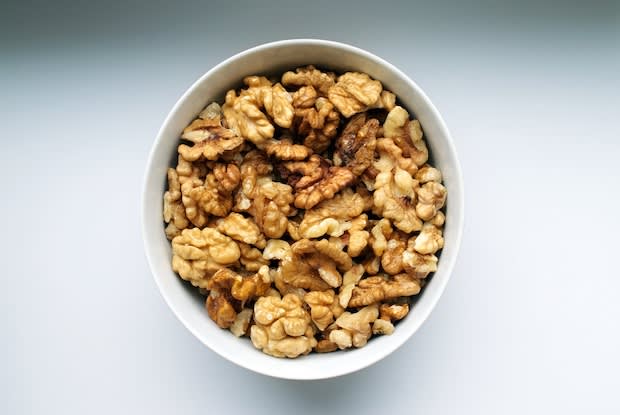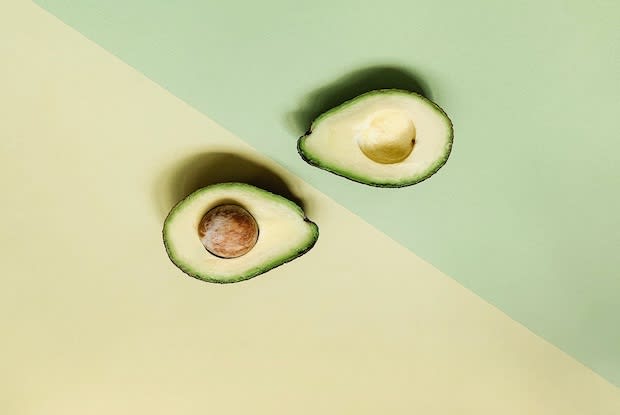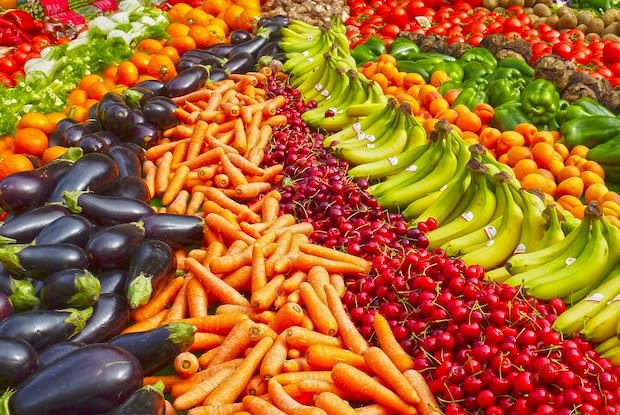Table of Contents
III. Reduce Saturated Fat Intake
b. How Much Fat is Recommended?
c. Evidence in Support of Plant-Based Eating
IV. Replace Saturated Fat with Polyunsaturated and Monounsaturated Fats
V. Eat colorful fruits and vegetables
X. Avoid refined sugars and grains
Diet and Cholesterol
If you suffer from high cholesterol, your doctor may suggest a combination of cholesterol-lowering medication, such as Zetia, and lifestyle changes, such as a healthy low-fat diet and exercise. There are a handful of dietary changes you can make to influence your cholesterol levels.
Trans and saturated fats should be avoided due to their ability to increase LDL (bad) cholesterol levels and risk for heart disease. Polyunsaturated and monounsaturated fats have been shown to lower blood cholesterol, and are a good alternative to saturated fats. Lastly, eating a whole-foods plant-based diet that includes all colors of the rainbow is recommended, with a reduction in the consumption of refined sugars and grains.
Eliminate Trans Fats
Trans fats are the worst kind of dietary fat. Natural trans fats are formed in the stomach of cattle, sheep, and goats. Artificially created trans fats are formed through a process called hydrogenation. Hydrogenation involves adding hydrogen to oil to form a semi-solid, known as a partially-hydrogenated oil. [1]
Some people may consume high amounts of trans fats without even realizing it, due to their food choices. Trans fats are often added to packaged products to increase their shelf-life, and to provide a desirable taste and texture. Some restaurants may use trans fats to deep-fry foods because this kind of oil can be easily reused. Although trans fats are banned in some places worldwide, their use still exists.
Trans fats are bad because they increase your LDL (bad) cholesterol and lower your HDL (good) cholesterol. This type of fat contributes to heart disease, stroke, diabetes, and other chronic conditions. Even trace can have harmful health consequences. According to Harvard Health Publishing, “for every 2% of calories from trans fat consumed daily, the risk of heart disease rises by 23%.” [2]

Trans fats were banned in the US as of June 2018, but products manufactured before this date may still be distributed up until 2021. There are still a handful of food culprits that may contain trans fats.
Keep your eye out for:
- Vegetable shortening
- Microwavable popcorn
- Some margarines and vegetable oils
- Fried fast foods
- Bakery products such as cakes, pie crusts
- Non-dairy coffee creamers (coffee whiteners)
- Potato and corn chips
- Meat pies
- Sausage rolls
- Sweet pies
- Pizza
- Canned frosting
- Cookies
- Crackers [3]
To avoid trans fat consumption, always read food labels prior to eating. Under the nutrition facts panel, search for 0 grams of trans fat. Zero amount of trans fat is still considered to be a product with under 0.5 grams per serving. If the product doesn’t state any trans fat, search for “partially hydrogenated oils” in the ingredient list as an indicator that this product contains trace amounts. Furthermore, if you are out for dinner, ask the chef if they use partially hydrogenated oil to cook any of their menu options before you order.
Reduce Saturated Fat Intake
Saturated fat is a common attribute of the American diet and is found in foods such as red meat, poultry, dairy products such as butter, cream, and cheese, coconut oil, and in many baked goods. Fats that are solid at room temperature, such as coconut oil or bacon grease, tend to contain a high amount of saturated fat. Coconut oil is made up of almost 90 percent saturated fat, whereas butter contains 60 percent.
Saturated Fat Facts
There is a lot of misinformation out there regarding saturated fat. It’s important to look at the evidence and make an educated decision about what’s best for your health. Here are some interesting facts about saturated fat that are backed by scientific studies and evidence:
According to a study published in the International Journal of Cancer, women who consume red meat and processed meat (both high in saturated fat) are at an increased risk for developing breast cancer [4]
Saturated and trans fat increases abdominal obesity (also known as excess visceral fat), increasing the risk of cardiovascular disease, cancer, and diabetes [5]
A study published in Diabetes Care indicates that a diet high in saturated fat increase the risk for nonalcoholic liver disease and diabetes [6]
A study published in the Journal of the American Medical Association concludes that choices regarding diet, exercise, cigarette smoking, body weight, and hormone replacement therapy, in combination, change life expectancy by several years. Furthermore, individuals whose diet is low in saturated fat, and follow a vegetarian or vegan diet, may live up to ten years longer. [7] [8]
How Much Fat is Recommended?
Saturated fats raise LDL (bad) cholesterol, which correlates with adverse cardiovascular events and heart disease, such as heart attack and atherosclerosis. Limiting your saturated fat intake to keep LDL cholesterol levels in check is best for heart health.
The American Heart Association recommends aiming for a diet that includes no more than 5 to 6 percent of calories from saturated fat; if you eat 2,000 calories a day, no more than 120 of them (13 grams) should come from saturated fat. [9]
Although, some nutrition experts believe that 13 grams of fat per day is too high and that the focus on where we are getting this fat from matters most. The Dr Ornish plant-based nutrition program states that no more than 10 percent of calories should be from fat. This means no added fats, oils, avocados, coconuts, or olives — food sources that are high in dietary saturated fat. Four grams of good fat per day are recommended, from small amounts of fish oil, almonds, pistachios, pecans, cashews, and pumpkin, flax, and chia seeds. [10]
Evidence in Support of Plant-Based Eating

According to the Centers for Disease Prevention and Control, more than 94 million Americans have high cholesterol, putting them at an increased risk for heart disease. A solution to saturated fat intake, and its contribution to high cholesterol, may be as simple as changing your diet.
A study published in The Permanente Journal investigates the effects of a plant-based diet on heart disease. It was found that 82 percent of patients diagnosed with heart disease who followed a plant-based diet program demonstrated regression of their atherosclerosis, a reduction in the plaque that previously blocked their arteries.
Furthermore, 91 percent of patients had a reduction in angina episodes, a type of chest pain caused by a reduction of blood flow to the heart; this is a symptom of coronary artery disease. Lastly, there was a 37.2 percent reduction in LDL (bad) cholesterol in this group — similar results that would be achieved using statin medication. [11]
The control group was fed the American Heart Association diet, and 53 percent of this group had a progression in their artery blockage (atherosclerosis).
A plant-based diet aims to maximize the consumption of nutrient-dense plant foods while at the same time decrease the amount of processed foods, added oils and sugars, and animal-based foods you consume. A plant-based diet is full of nutrients the body needs to function optimally; macronutrients (carbohydrates, proteins, and fats), micronutrients (vitamins and minerals), and bioactive components (flavonoids, plant sterols, and polyphenols).
By eating a plant-based diet full of fruits, vegetables, whole grains, and legumes, you will naturally consume less saturated fat. If you are used to eating meat at every meal and see it as a staple in your diet, consider the evidence you read above. If eating more nutrient-dense plant foods could increase your life expectancy, it is a change worth making.
For guidance on how to approach these dietary and lifestyle changes, the Physicians Committee for Responsible Medicine provides a Vegetarian Starter Kit information booklet as a free online resource.
Dr Ornish, an American physician and researcher, is another knowledgeable resource to consult. Dr Ornish provides a plant-based nutrition program to help reverse heart disease, prostate cancer, diabetes, and to lose weight. Ornish Lifestyle Medicine considers what you eat, how you handle stress, how much you move, and how much love and support you have to help heal medical conditions such as heart disease.
Replace Saturated Fat with Polyunsaturated and Monounsaturated Fats
Polyunsaturated and monounsaturated fats are found in higher amounts in plants and seafood. They are liquid at room temperature, except for coconut and palm oils which are solid at room temperature. Both polyunsaturated and monounsaturated fats have been shown to reduce levels of LDL bad cholesterol.

Polyunsaturated fats are found in:
- Fish such as trout, tuna, herring, mackerel, and salmon
- Nuts such as walnuts and pine nuts
- Seeds such as sunflower, sesame, flax, and pumpkin seeds
- Vegetable oils such as soybean and sunflower oils
Polyunsaturated fats are also a source of omega-3, omega-6, and omega-9 fatty acids, types of fat the body cannot make. For example, salmon is a source of omega-3s, whereas almonds are a source of omega-6 and omega-9s. The American diet tends to be too high in omega- 6 fatty acids, and it is important to strike the appropriate balance of these three fatty acids in the diet for optimal health. [12]
Monounsaturated fats are found in:
- Nuts such as almonds, hazelnuts, peanuts, and pecans
- Olives
- Avocados
- Seeds such as pumpkin and sesame seeds
- Vegetable oils such as olive, peanut, and safflower oils

Fats are essential in many body processes such as immune and nervous system function, blood pressure regulation, and blood clotting. But not all fats are created equal. The amount and type of fat we consume have a direct impact on our cardiovascular health. As opposed to eating polyunsaturated and monounsaturated fats in addition to, think of eating these fats as a replacement for saturated fats in the diet.
Tips for healthier dietary fat choices:
Consider choosing oils higher in polyunsaturated and monounsaturated fats (olive and sunflower oil) and avoid oils high in saturated fat (coconut oil)
Replace meat and poultry with fish and plant sources of protein such as tofu, tempeh, nuts and seeds
Use slivered and baked almonds, cashews, or pecans instead of bacon bits to sprinkle on a salad
Instead of reaching for a bag of chips or packaged cookies, stock your fridge with cut-up fruit and vegetables and healthy dips such as almond butter and hummus
Don’t buy salad dressings and instead make your own
Try this 2-minute garlic-tahini salad dressing recipe:
- 1 tbsp extra virgin olive oil
- 2 tbsp balsamic vinegar
- 1 tbsp organic honey or maple syrup
- 2 tbsp organic tahini
- 2 finely chopped cloves of garlic
- A fingerprint of finely chopped ginger
- 1/8 tsp sea salt
- ¼ cup of water
Mix the above ingredients in a blender and serve lightly over a bed of green salad or roasted vegetables.
Eat Colorful Fruits and Vegetables

Fruits and vegetables have a myriad of compounds that help to lower cholesterol. These cholesterol-lowering compounds include sterols, stenols, flavonoids, and fiber.
Phytosterols (which include plant sterols and stanol esters) are a group of compounds found in plant cell membranes, also known as cholesterol blocking compounds. Because phytosterols are structurally similar to cholesterol, they compete with cholesterol for absorption. When phytosterols are present in the diet, cholesterol absorption is blocked, and levels of blood LDL (bad) cholesterol are reduced. [13]
Flavonoids are in a group of plant metabolites called polyphenols that have been shown to reduce mortality risk from heart disease. They are often found in fruits, vegetables, and seeds. Naturally occurring flavonoids provide preventative and curative effects in people with atherosclerosis because of their antioxidant and cholesterol-lowering effects on the body. [14]
Consider plant-based sources of fiber as a friend for your heart. The two types of fiber include soluble and insoluble fiber. Foods that contain soluble fiber, such as oats, beans, broccoli, and apples, help to lower blood cholesterol levels. When soluble fiber is ingested, it dissolves in water to form a gel that slowly moves through the digestive system collecting fat (dietary cholesterol, bile salts, sugar) that is then excreted from the body. Thus, fiber helps to remove excess cholesterol from the body, lowering LDL cholesterol. [15]
The next time you go to the grocery store, try to choose plant-based ingredients that include all colors of the rainbow. Think strawberries, apples, oranges, carrots, sweet potato, tomatoes, peppers, cherries, purple cabbage, blueberries, kale, leafy greens, asparagus, white or red potato, ginger, garlic, onion — the options are endless. The more colors of the rainbow you eat, the more your body will have access to disease-fighting, cholesterol-lowering compounds.
Avoid Refined Sugars and Grains

Although whole grains are a source of soluble fiber, people often think that refined flour or white rice has the same properties. Food items such as quick oats, white rice, white flour, have been bleached, and the fiber has been processed out, removing its nutrient-density. Whole wheat flour or white brown rice are grain alternatives to search for. [16]
A study published in the Progress in Cardiovascular Diseases Journal found that added sugars in the diet is linked with an increased risk for heart disease. The study authors recommend the avoidance of refined sugars and highly-processed foods wherever possible and support the eating of a whole food diet from living botanical plants. [17]
Ingredients such as sugar, corn syrup, or a word that ends in “ose” should be avoided. Opt for plant-based sources of monounsaturated and polyunsaturated fat, as opposed to processed foods full of sugar and saturated fats.
The content in this article is intended for informational purposes only. This website does not provide medical advice. In all circumstances, you should always seek the advice of your physician and/or other qualified health professionals(s) for drug, medical condition, or treatment advice. The content provided on this website is not a substitute for professional medical advice, diagnosis or treatment.
